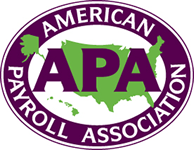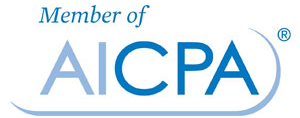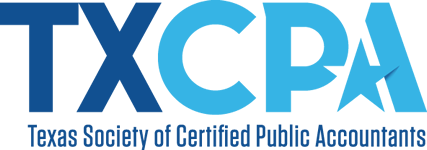
Charles Read, CPA, USTCP, IRSAC
President/CEO GetPayroll
Find me on LinkedIn
The Personal Responsibility and Work Opportunity Reconciliation Act (PRWORA) of 1996, known as welfare reform, requires all employers to report certain information on their newly hired employees to a designated state agency.
New hire reporting is a process by which you, as an employer, report information on newly hired employees to a designated state agency shortly after the date of hire. As an employer, you play a key role in this important program by reporting all your newly hired employees to your state.
New Hire Information
States match new hire reports against their child support records to locate parents, establish a child support order, or enforce an existing order. In addition to matching within a state, states transmit the new hire reports to the National Directory of New Hires (NDNH).
State agencies operating employment security (unemployment insurance) and workers’ compensation programs have access to their state new hire information to detect and prevent erroneous benefit payments.
In addition, each state can conduct matches between its own new hire database and other state programs to prevent unlawful or erroneous receipt of public assistance, including welfare, food stamps, and Medicaid payments.
National Directory of New Hires
It is estimated that more than 30% of child support cases involve parents who do not live in the same state as their children. By matching this new hire data with child support case participant information at the national level, the Office of Child Support Enforcement assists states in locating parents who are living in other states. Upon receipt of new hire information from other states, state child support agencies can take the necessary steps to establish paternity, establish a child support order, or enforce an existing order.
New Hire As Part of Welfare Reform Legislation
A major focus of PRWORA is the parents’ responsibility to support their children. It contains strict work requirements for custodial parents receiving public assistance and increases the effectiveness of the child support program by including new hire reporting programs in each state. The federal government attributes tens of millions of dollars in collections to the use of new hire data.
Reporting Process for Employers
The majority of the information an employer submits is already collected when a new employee completes a Form W-4. Although the reporting process is an additional requirement, the majority of employers participating in state-established programs report “no” or a “minor” cost impact on their operations. To ease the process, states are working closely with their employers, offering them a variety of reporting methods.
Other Benefits to Employers
A potential benefit to employers is the reduction and prevention of fraudulent unemployment and workers’ compensation payments. Timely receipt of new hire data allows each state to cross-reference this data against its active workers’ compensation and unemployment insurance claimant files to either stop or recover erroneous payments. States have saved millions of dollars of erroneous unemployment insurance payments because of these tools.
Definitions
Employer Federal law states that an “employer” for new hire reporting purposes is the same as for federal income tax purposes (as defined by Section 3401(d) of the Internal Revenue Code of 1986) and includes any governmental entity or labor organization. At a minimum, in any case where an employer is required to have an employee complete a Form W-4, the employer must meet the new hire reporting requirements.
Date of Hire: The “date of hire” is the day an individual first performs services for wages.
Newly Hired Employee: The law defines a “newly hired employee” as:
- an employee who has not previously been employed by the employer.
- a person who was previously employed by the employer but has been separated from such prior employment for at least 60 consecutive days
Rehired Employee If the employee returning to work is required to complete a new Form W-4, or has been separated from your employment for at least 60 consecutive days, you should report the individual as a new hire to the State Directory of New Hires (SDNH). If, however, the returning employee has not been formally terminated or removed from payroll records, or returns to employment within 60 consecutive days of separation, there is no need to report that individual as a new hire.
New Hire Report for Independent Contractors
Some states do require the reporting of independent contractors through the “New Hire” reporting system. However, federal law does not require it. The State New Hire Reporting Contacts and Program Information matrix, available at www.acf.hhs.gov/programs/css/resource/state-new-hire-reporting-contacts-and-program-information, lists the state requirements including independent contractor requirements.
Temp Agency and New Hire Reporting
If you are a temp agency and paying wages to the individual, you must submit a new hire report. The individual needs to be reported only once except when there is a break in service from your agency of 60 days or more or that would require a new Form W-4. If your agency simply refers individuals for employment and does not pay salaries, new hire reports are not necessary. However, the employer who actually hires and pays the individual, whether on a part-time or full-time basis, will be required to report the new hire information.
Timing of Report
Federal law mandates that new hires be reported within 20 days of the date of hire. However, states are given the option of establishing reporting time frames that may be shorter than 20 days. You must adhere to the reporting time frame of the state to which you report. Be sure to check with your state new hire contact to learn your state’s requirements (www.acf.hhs.gov/css/resource/new-hire-reporting-answers-to-employer-questions).
Form for Reports
Each new hire report must contain seven data elements:
Employee name
Address
Social Security number (SSN)
Date of hire (the date an employee first performs services for pay)
Employer name
Address
Federal employer identification number (FEIN)
Although most states require only these seven basic data elements, some states require or request additional data. Check with your state for reporting requirements.
Employee Quits before Report Is Due
Because the employer/employee relationship existed, and wages were earned, a new hire report must be submitted. Even though the employment period was short, the reported information may be the key to locating a noncustodial parent.
Address for Report
New hire reports should be sent to the SDNH in the state where the employee works. Federal law identifies three methods for submitting new hire information: first class mail, magnetic tapes, or electronically. For the convenience of employers, states offer additional options such as fax, email, phone, and online transmissions. Your state new hire contact can provide you with instructions on where and how to send new hire information.
Federal employers report new hire data directly to the National Directory of New Hires.
Reporting Time Frame for New Hire Reports
If you are an employer sending new hire reports by magnetic tape or electronically, you must make two monthly transmissions not less than 12 days and not more than 16 days apart. You should contact the state where you submit your new hire reports for all technical information regarding electronic reporting.
Information Security
Security and privacy of new hire data are important issues for all those involved in this nationwide program. Federal law requires all states to establish safeguards for confidential information handled by the state agency.
All state data is transmitted over secure and dedicated lines to the NDNH. Federal law also requires that the Secretary of Health and Human Services (HHS) establish and implement safeguards to protect the integrity and security of information in the NDNH, and restrict access to and use of the information to authorized persons and for authorized purposes.
Penalties
States have the option of imposing civil monetary penalties for noncompliance. Federal law mandates that if a state chooses to impose a penalty on employers for failure to report, the fine may not exceed $25 per newly hired employee. If there is a conspiracy between the employer and employee not to report, that penalty may not exceed $500 per newly hired employee. States may also impose nonmonetary civil penalties under state law for noncompliance.
Multistate Employer Issues
If you are a multistate employer, you have two reporting options. You may report newly hired employees to the states in which they are working, or alternatively, you may select one state where you have employees working to which to report all your new hires. If you choose to report to one state, your new hire reports must be submitted by magnetic tape or electronically. Also, you must notify the Secretary of HHS, in writing, of the state you have chosen. Fax or mail your notification to:
US Department of Health and Human Services
Office of Child Support Enforcement
Multistate Employer Registration
Box 509
Randallstown, MD 21133
(410) 277-9325 (fax)
You also can electronically submit a multistate employer notification form. The NDNH will maintain a list of multistate employers and their designated reporting locations.
Additional Information
The state where you operate a business can provide you with complete information and instructions, as necessary, regarding all aspects of its new hire program and your responsibilities as an employer. If you have additional questions or concerns, please refer to the State New Hire Reporting Contacts and Program Information (www.acf.hhs.gov/programs/css/resource/state-new-hire-reporting-contacts-and-program-information).
Interested in learning more about GetPayroll services?
Are you shopping for new payroll services? Schedule a demo to see if GetPayroll is right for your business.
If you are a current GetPayroll customer (yay!), take a look at some of our new services that may help streamline your business operations.
Comments and Suggestions
Don’t forget to leave us a comment below and tell us what you think. If you have any requests or suggestions, we’d love those too!










